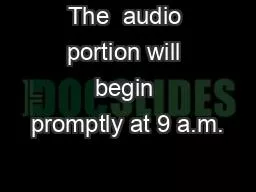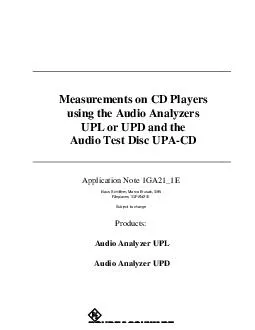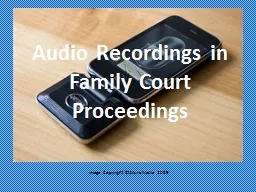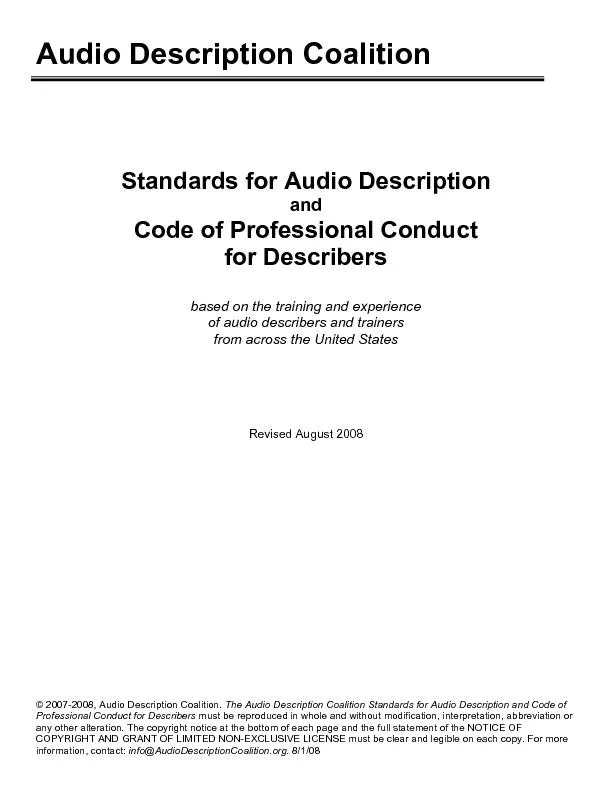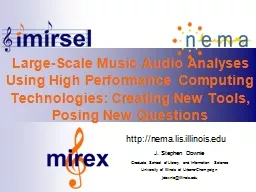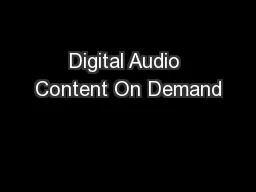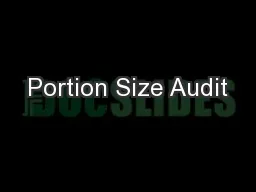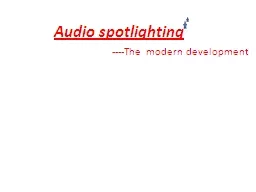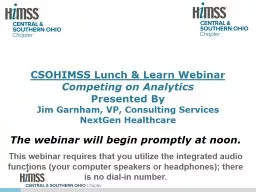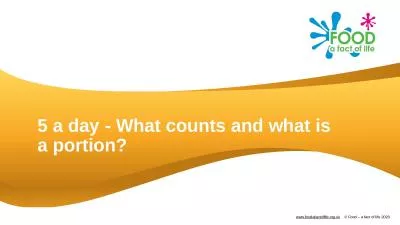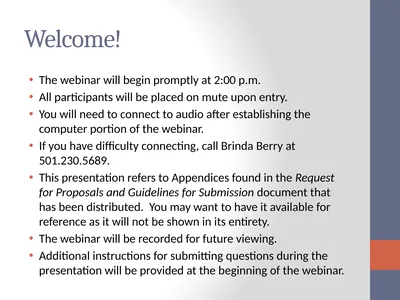PPT-The audio portion will begin promptly at 9 a.m.
Author : hoodrona | Published Date : 2020-08-29
If you are having difficulties hearing and its after 9 am please contact your IT department as we are unable to help from this end Please type your first and last
Presentation Embed Code
Download Presentation
Download Presentation The PPT/PDF document "The audio portion will begin promptly a..." is the property of its rightful owner. Permission is granted to download and print the materials on this website for personal, non-commercial use only, and to display it on your personal computer provided you do not modify the materials and that you retain all copyright notices contained in the materials. By downloading content from our website, you accept the terms of this agreement.
The audio portion will begin promptly at 9 a.m.: Transcript
Download Rules Of Document
"The audio portion will begin promptly at 9 a.m."The content belongs to its owner. You may download and print it for personal use, without modification, and keep all copyright notices. By downloading, you agree to these terms.
Related Documents

